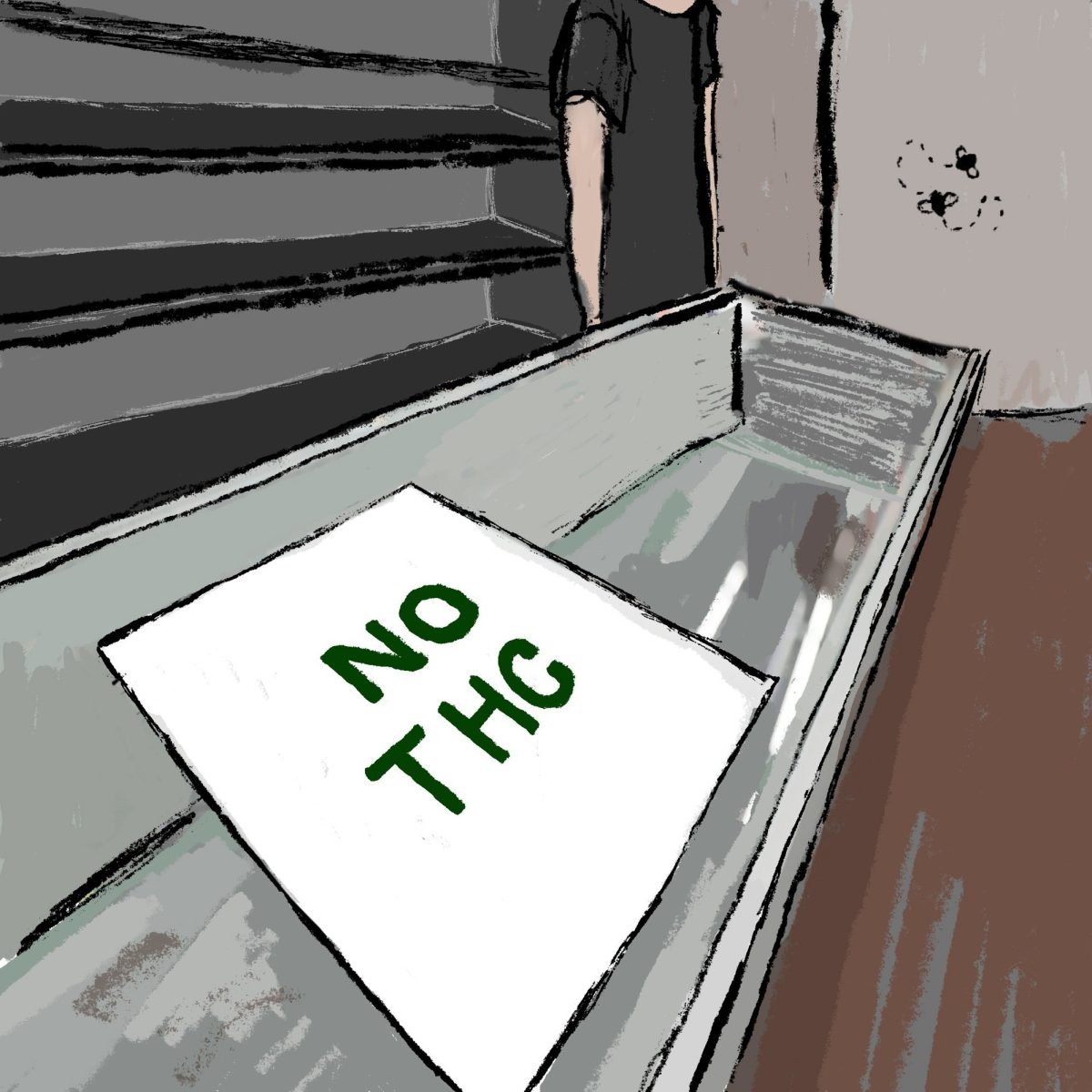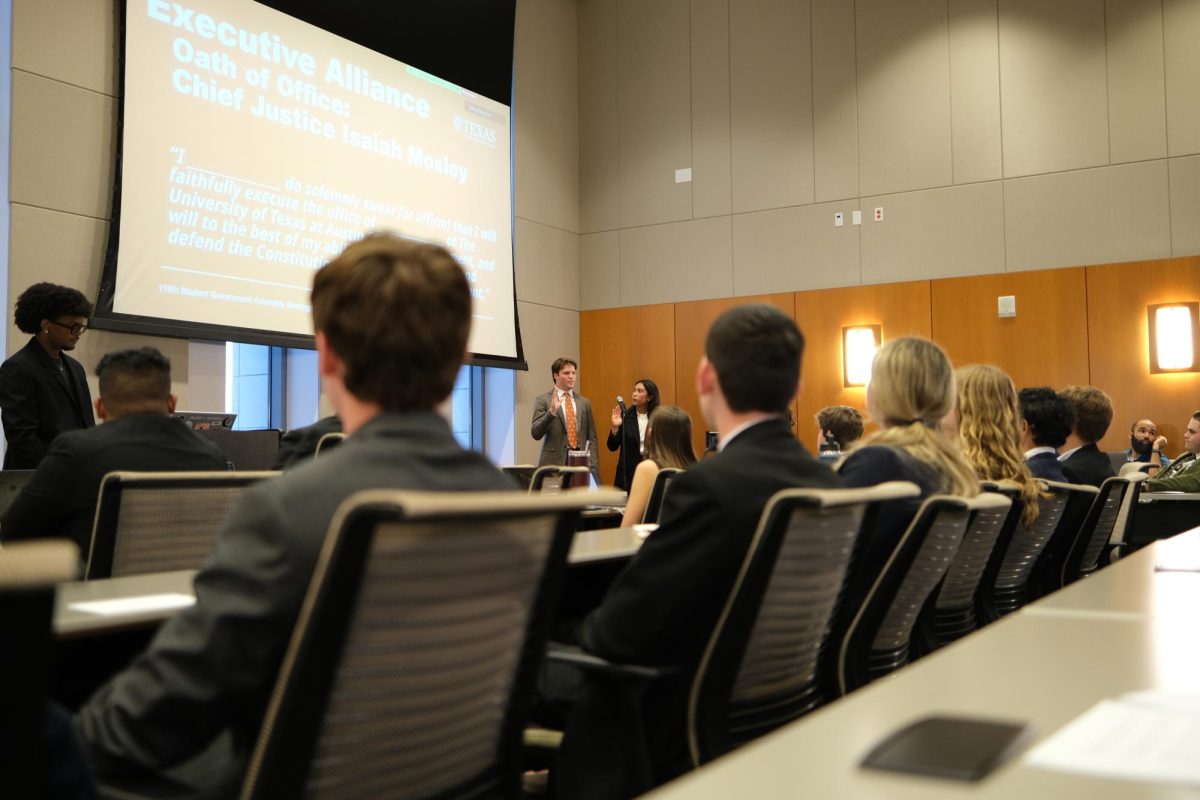Standing in the midst of slide projections, scaffolds and paintings displaying vivid and energetic colors, artist Mika Tajima quietly surveyed her work as it neared completion Tuesday in the Visual Arts Center.
At a Blanton Museum event on campus Tuesday, Tajima, the new artist-in-residence at the UT, explained her creation process for her exhibit “The Architect’s Garden,” set to be open from Sept. 9 until Dec. 17 in the Visual Arts Center.
The exhibit combines painting, sculpture, architecture and video and incorporates elements from the UT and Austin community. Tajima said she based her exhibit on the two major standpoints of UT architecture and the idea of cultural refusal.
She said she incorporated aspects of UT architecture with references in the print patterns to the Perry-Castañeda Library, window shapes and building forms.
“I’m always sort of looking to architecture as a reference because that’s the way we navigate, through the space architecture forms — the social spaces we interact in and our human behavior is sort of determined by it” Tajima said.
She said she also used the idea of refusal and how it is dealt with in these sorts of spaces, exploring the different metaphorical modes of being and becoming in her work. Tajima references Austin-based filmmaker Richard Linklater’s “Slacker” and how the characters refuse to take on a prescribed lifestyle and instead take on different roles or routes.
“[Slacker’s] very Austin but a type of idea I’ve been working with in previous shows, a painting refusing to be only a painting,” Tajima said.
Many of the visual references in Tajima’s work are from around the campus and city, said Aimee Chang, manager of public programs at the Blanton. Chang said Tajima used images of books from the PCL website, the stylized word ‘Detour’ from Linklater’s website and created posters with imagery inspired by the history of the Austin Film Society.
Chang said art opens up the possibilities of a lot of different things while not having single answers, and this show does this in particular with its hybrid pieces. It opens up possibilities for people, she said.
It’s especially interesting how she incorporates video, performance and painting into her exhibit, said studio art senior Chantal Wnuk. Wnuk said she is excited to see how the entire exhibit comes together.
Tajima said she hopes to encourage people to look at her exhibit and think about the ideas behind it, and that it sparks something in their minds or imagination.


















